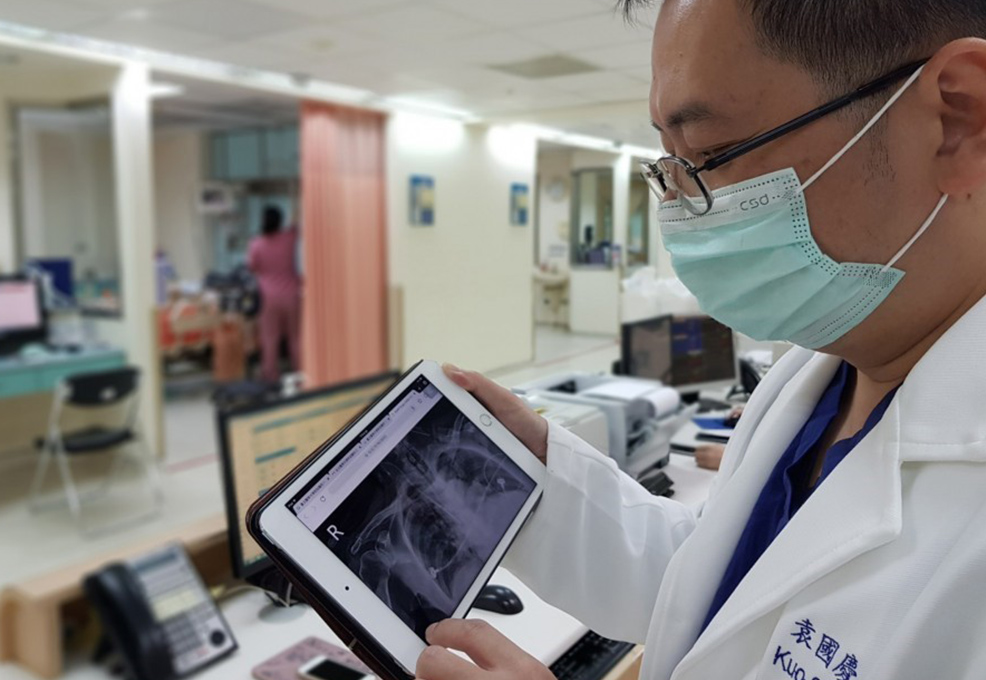Protecting the Hearts of Breast Cancer Survivors

Author(s)
Pai-Chien ChouBiography
Dr. Pai-Chien Chou graduated from the Department of Medicine, Taipei Medical University, completed his residency and thoracic specialty physician training at Linkou Chang Gung Memorial Hospital, and completed his Ph.D. training in Imperial College London, in the UK. He is currently working in the affiliated hospital of Taipei Medical University as the director of thoracic medicine and the director of the Career Development department. His research topics include chronic airway diseases, translational medicine, and AI in medicine.
Academy/University/Organization
The affiliated hospital of Taipei Medical University-
TAGS
-
Share this article
You are free to share this article under the Attribution 4.0 International license
- LIFE SCIENCES
- Text & Image
- May 21,2020
As the epidemic of Covid-19 Pneumonia raged, the topic of the COVID-19 virus became the focus of the news. Although the result of the challenge to fight the new coronavirus has not yet been seen clearly, the release from isolation of hundreds of originally positive cases yields positive messages for us. However, there are still some unknown puzzles, such as the persistence of the virus even after long-term quarantine and the variability of clinical symptoms in infected patients. Through the gathered evidence of the current studies, we have also found some feasible breakthrough concepts for possible solutions to the virus threats.
Currently, the COVID-19 virus is mainly transmitted through droplets, with the virus first colonizing the upper respiratory tract. Real-time polymerase chain reaction (RT-PCR) is widely adopted to diagnose whether the patient is infected or not. Additionally, the diagnosis can also be made by detecting the specific surface protein antigens or the production of virus-specific IgM/IgG antibodies. Through the application of these methods, it is expected to achieve a balance between cost, performance and speedy control. Furthermore, through the presence or absence of viral RNA and the existence of a virus-specific antibody, the stage of the infection status can be classified and viewed as a reference for subsequent treatment.
At present, there are still technical problems for confirming diagnosis, which includes the time of collection, the site of infection and also the amount of detectable viruses. Despite the result of the PCR test being negative, the presence or absence of the virus cannot be completely excluded. Due to the variability of symptoms and immune response to the virus, some asymptomatic carriers may exist, which can lead to the possibility of community transmission. To reduce the possibility of the spread of the virus in the environment, extensive disinfection is currently being applied. However, due to differences in microenvironments, the survival time of the virus differs, leading to the problem of partial disinfection.
Whether the virus will be killed successfully or not, several factors must be considered:
1.Local microenvironments:
Ciliary movement, the mucus on the surface of epidermal cells, and the composition of immune-related mucus are primary defenses for the virus. Other physical factors including epithelial barrier function, temperature, and humidity changes of the upper and lower respiratory tract may also be associated with the survival of the virus. Establishing the healthy upper airway function may reduce the virulence and survival of the virus.
2.Innate immunity and acquired immunity:
Several immune-related cells, such as natural killer cells, dendritic cells, lymphocytes, white blood cells and the production of effective antibodies, will affect the virus removal efficiency. How to effectively analyze and qualify the individual's responses to the virus and the infected person's immune system can be activated effectively, and whether immune dysfunction related to virus infection will occur due to comorbidity related to hypertension, renal disease or cardiovascular disease are prognostic biomarkers. Currently, there are no good biomarkers for clinical predictions.
According to the high mutation potential of COVID-19, the coronavirus will gradually adapt to the human airway environment and result in changes in infectivity and pathogenicity. At present, the treatment modality mainly focuses on the development of vaccines and drug targeting on virus growth inhibition as the main axis. However, there are still some new possibilities we may try to control the spread of the virus.
1.Non-specific virus disinfection products:
Some disinfectants have been proven to eradicate virus growth. By destroying the virus on the surface of the environment, subsequent infections can be reduced. Additionally, some chemicals of low biohazards can reduce virus growth by inhalation routes. Through these non-specific virus eradication products, the virus load for those victims who were infected but asymptomatic can be reduced, further preventing the risk of subsequent virus replication, and shortening the required quarantine time.
2.Telemedicine and wearable devices monitoring clinical progressions:
Although the symptoms of COVID-19 may be mild or limited, the progression to respiratory failure is still noted in some patients. While home quarantine reduces the spread of the virus among communities, the progression of clinical symptoms still needs to be monitored among high-risk groups. Through the combination of wearable devices, telemedicine analysis of physiological markers is able to identify patients who need to be hospitalized before respiratory failure, thereby reducing mortality.
3.Medical robots:
Most patients who are suspected of COVID-19 infection may be proved negative after virus study, but isolation is still suggested due to medical reasons. The lack or shortage of isolation clothing and protective equipment may increase the risk of infection among medical personnel. Robots can perform some low-level medical activities. Through simple disinfection of medical robots, the burden on medical staff can be reduced, and the patient's activity patterns can be analyzed by artificial intelligence to speculate on the progress of the disease.
4.Reusable high-end protective equipment:
At present, much protective clothing and equipment are designed for single use. However, with the strength of Taiwan's textile industry, the protective clothing can be designed to be reused after disinfection, which can be promoted for multiple uses in the future to overcome the risk of the lack of materials.
Facing the rage of COVID-19, with the implementation of proper policies by the government through adequate quarantine and border control measures, the domestic epidemic situation is stable. However, the pressure of community spread may lead to a higher infection possibility for the elderly. We must strengthen our treatment ability. Through the generation of more anti-epidemic proposals and the verification of relevant immune markers, we can understand the key factors of the impact of COVID-19. The strong cooperation between physicians, scientists, and related industries will help us to establish a strong defense against emerging infectious diseases.
STAY CONNECTED. SUBSCRIBE TO OUR NEWSLETTER.
Add your information below to receive daily updates.




